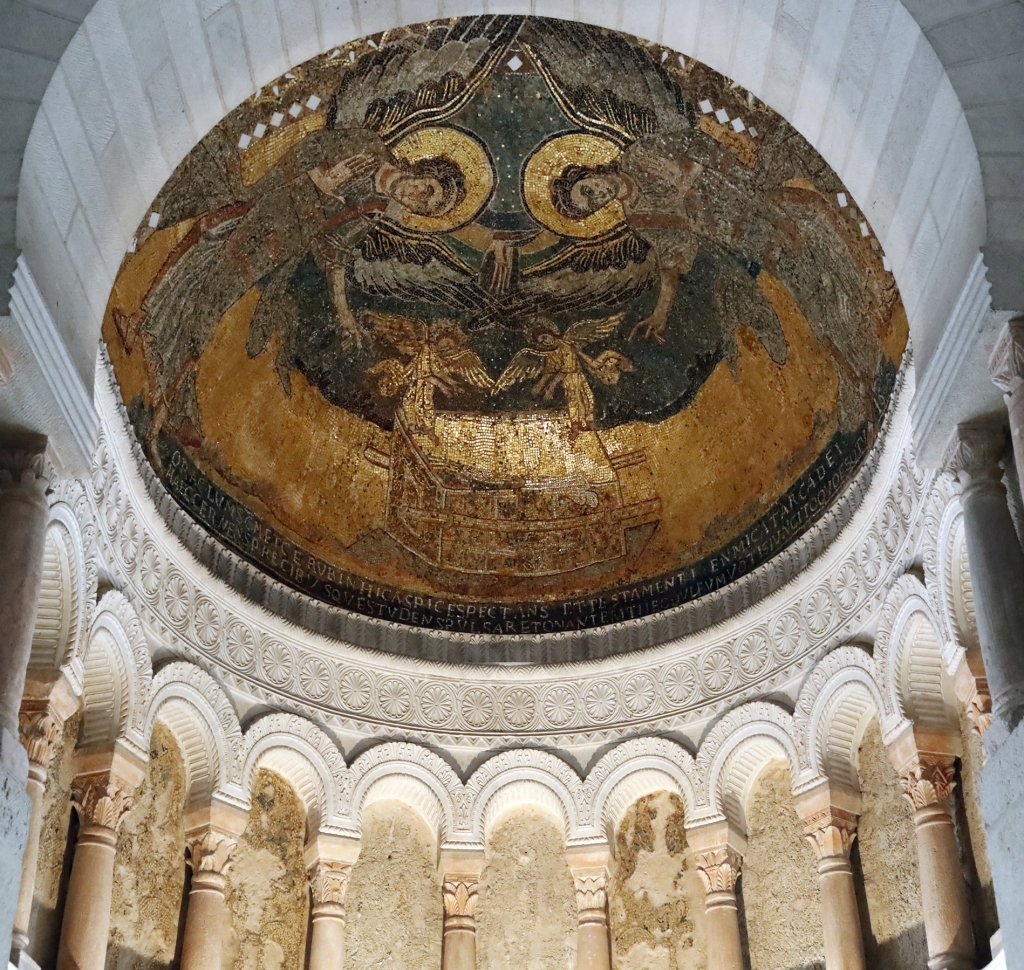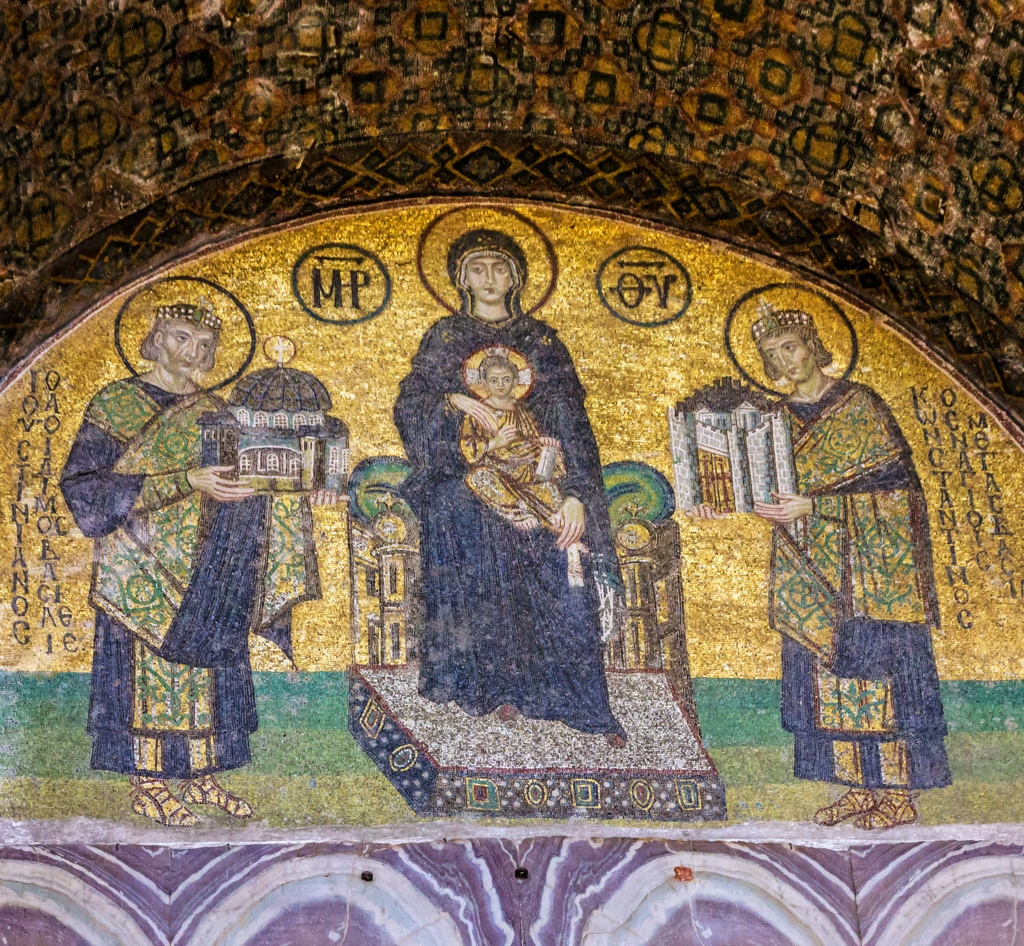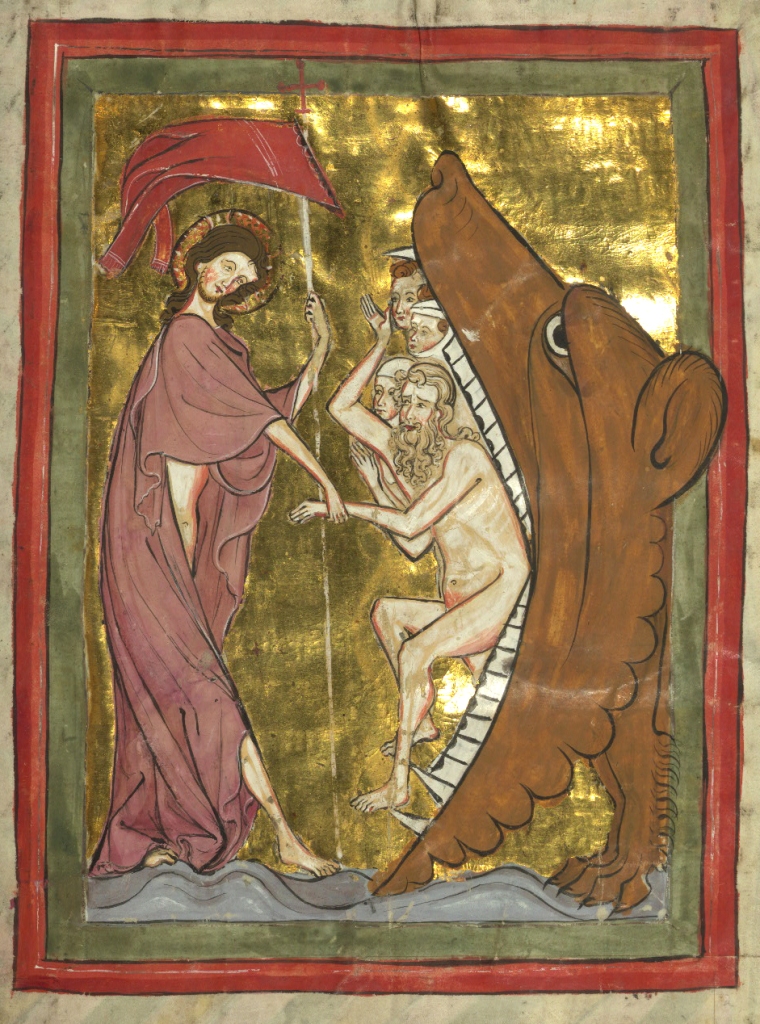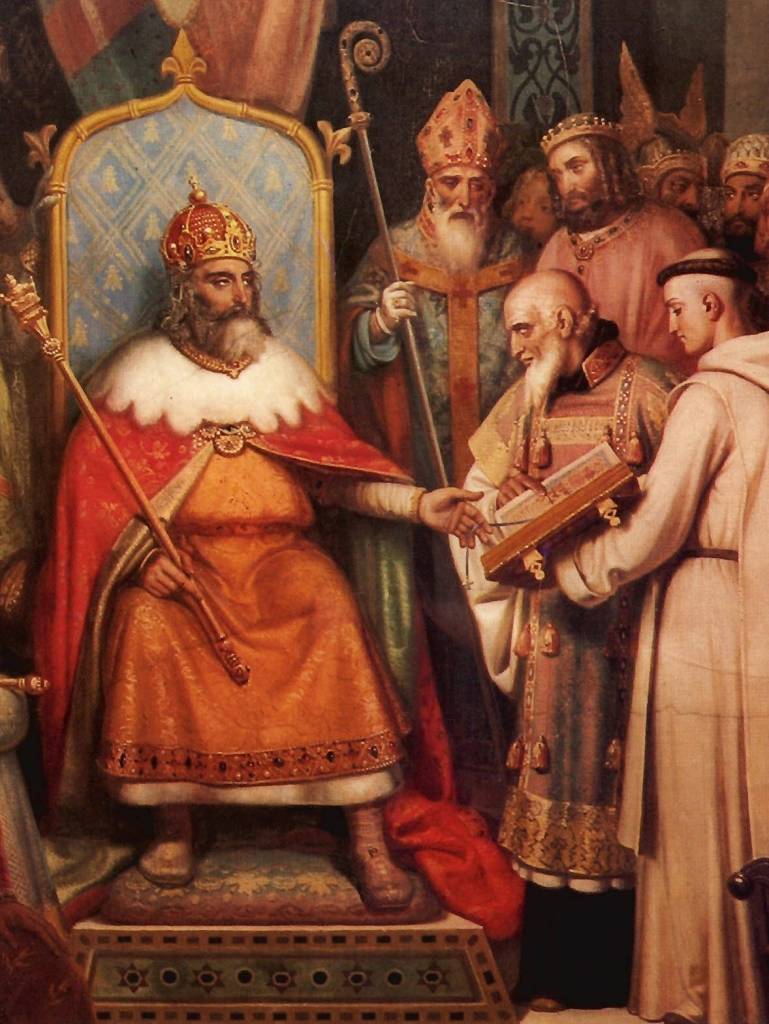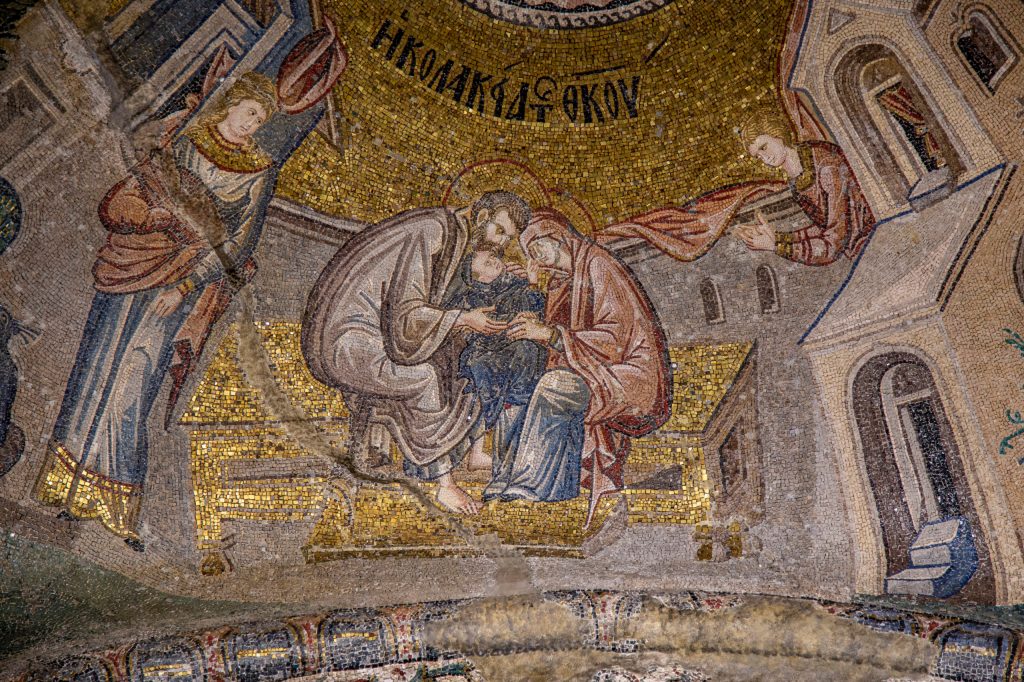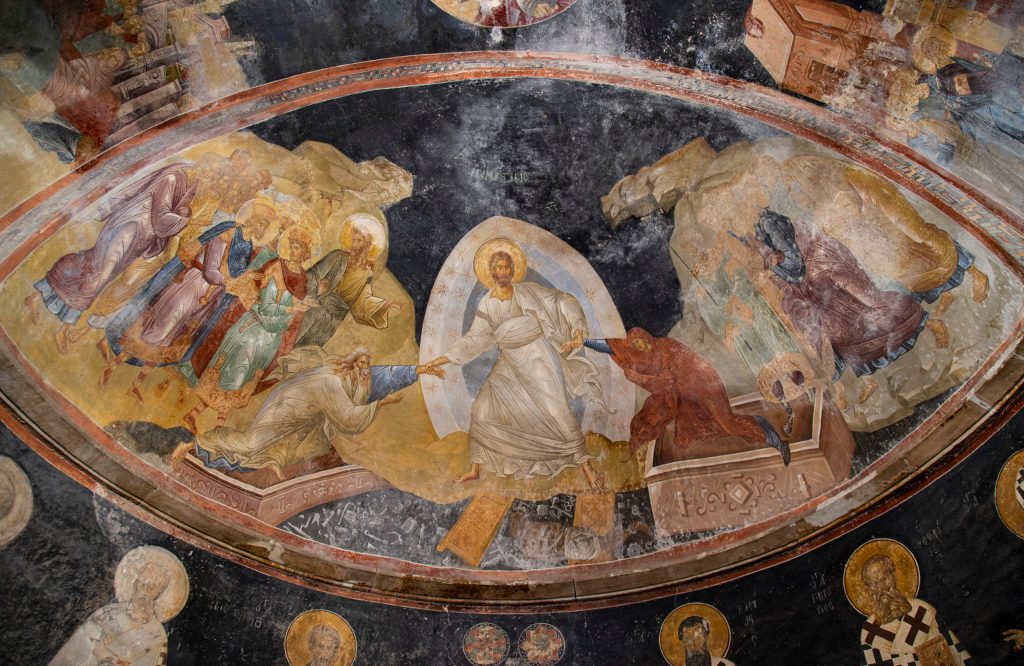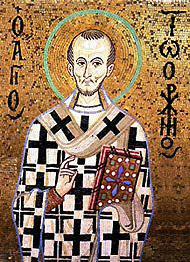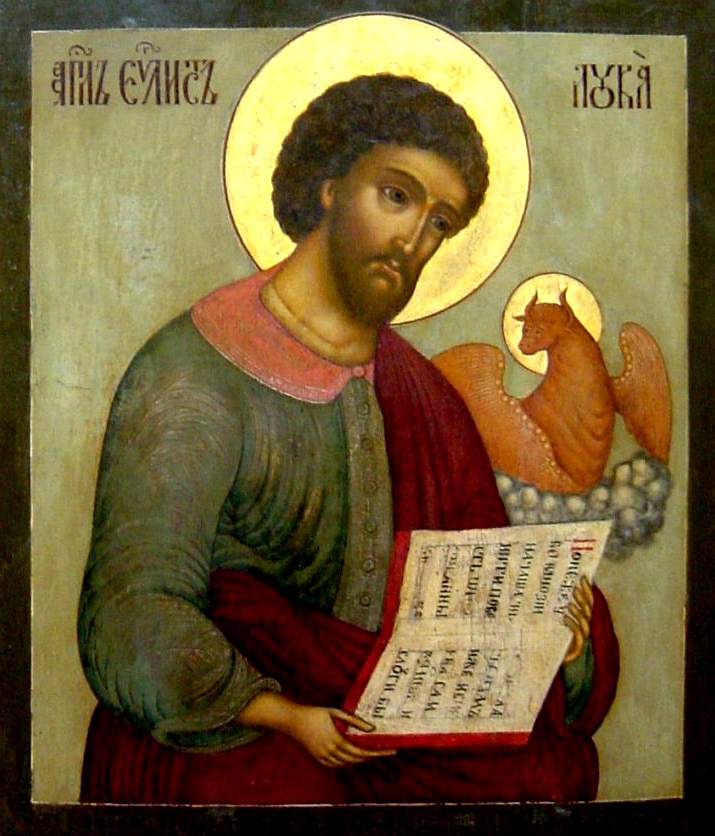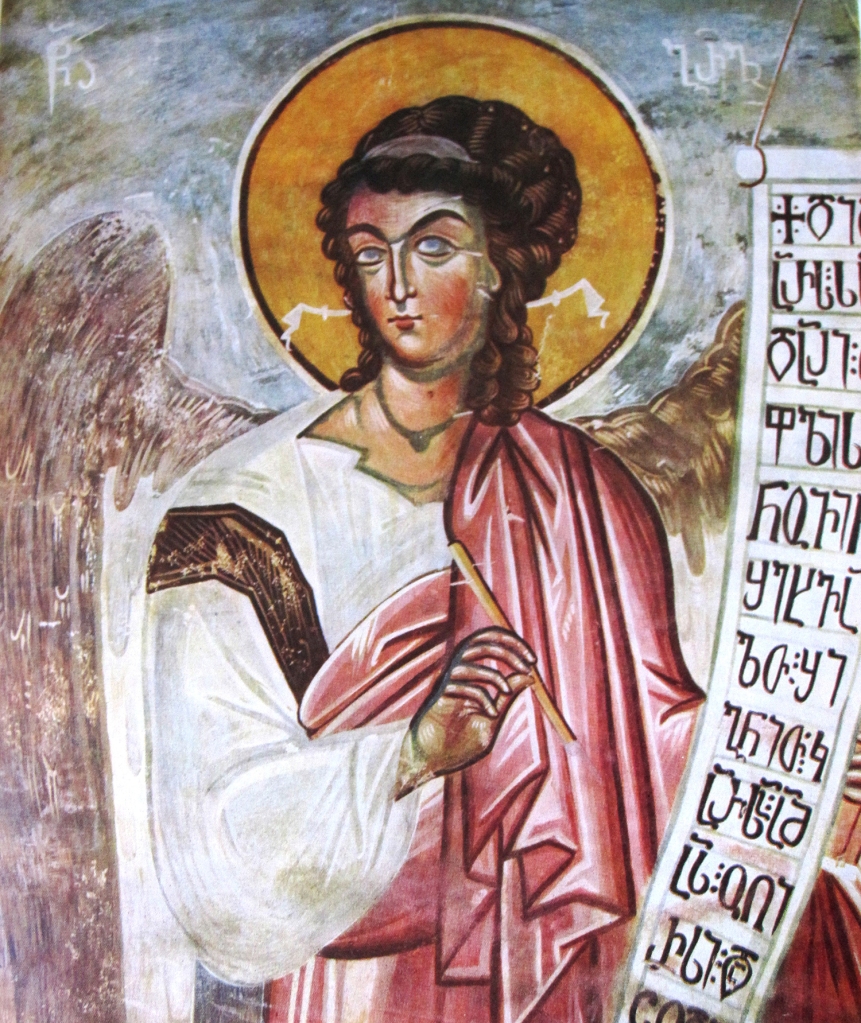This week’s focus shifts from Byzantine mosaics to the Palatine Chapel at Aachen, Germany, built in the late 700s and early 800s by the Holy Roman Emperor Charlemagne (Carolus Magnus, or Charles the Great). The first Holy Roman Emperor since sack of Rome in 455 A.D., Charlemagne sought to extend the reach of Christianity into the lands which formerly lived in fear of attacks by Vikings. By the end of his reign at his death in 814 A.D., his empire extended from the English Channel, the North Sea, nearly all of Spain, more than half of Italy, and southeast into what is now Austria and beyond.
The Palace was designed by Odo of Metz, the same Armenian designer whose work in France was illustrated earlier in this series. The Palace was consecrated by Pope Leo III in 805 A.D. The mosaic is Illustration No. 36 in our publication, Angels: In Scripture, Art & Christian Tradition. The influence of Byzantine styles from the age of Constantine and Justinian is clear. Damage to the structure during bombing in World War II was repaired between 1986 and 2011. The building was used for coronations for several centuries after the death of Charlemagne.
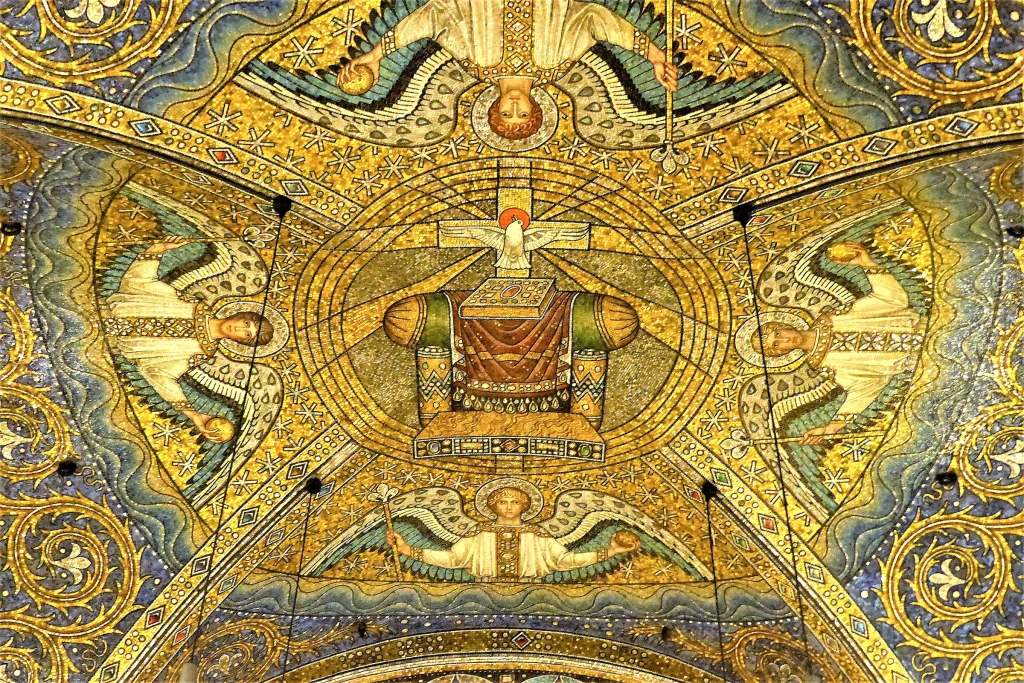
In this crazy time in the decline of Western Civilization and attacks upon Christianity around the world, it seems appropriate to close with these words from the Te Deum Laudamus canticle, presented in verse-and-response format as used in First Hour in our publication, Hear Us, O Lord: Daily Prayers for the Laity:
O Lord, save thy people, and bless thine heritage
Govern them and lift them up forever
Day by day we magnify thee
And we worship thy Name ever, world without end.
Vouchsafe, O Lord, to keep us this day without sin.
O Lord, have mercy upon us, have mercy upon us.
O Lord, let thy mercy be upon us, as our trust is in thee.
O Lord, in thee have I trusted; let me never be confounded.
Thank you for your interest in these splendid examples of Christian art across the centures.
Glory be to God for all things! Amen!
